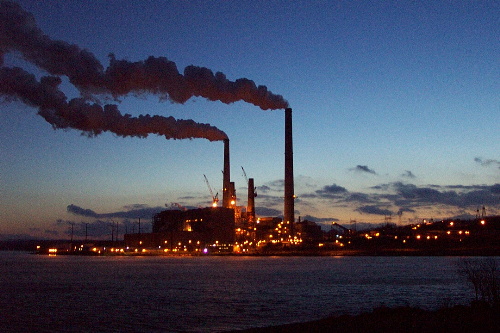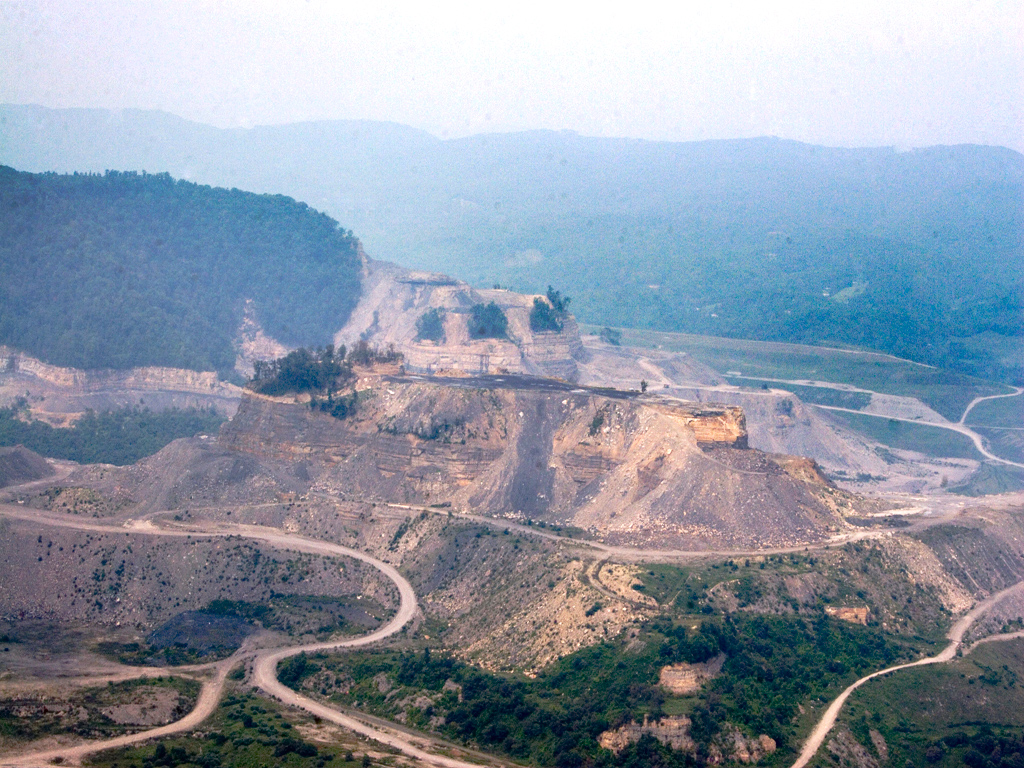Upcoming Legal Battles Have Huge Energy Implications For Virginia
By: floodguy
Published On: 3/26/2008 12:22:39 AM

With the enactment of the Energy Policy Act of 2005, the federal designation of two national transmission corridors has touched off significant controversy on both sides of the nation. The corridor designation provides utilities with backstop authority at the federal level, should a state's utility board fail to approve or act within twelve months of the utility's application request. One of these corridors designates six states in the east, including the state of Virginia, and the second designates southern California and Arizona.
Because of tougher state energy & clean air laws and citizen opposition, energy demand is building in the northeast from Washington, D.C. to New York City and in the Los Angeles to San Diego. Both regions' utility providers face challenges and costly efforts to build new power plants there. Federal policymakers have opted to find new capacity for these areas, by encouraging interstate transmission lines from fossil fuel sources in other states, and even force them through with federal eminent domain authority, if required.
Last year, most of the states affected by the designation appealed to the Dept. of Energy for reconsideration. The reasons were wide ranging, but earlier this month Energy Secretary Bodman stated he had considered the appeals, but decided the corridor designations were properly made. Consequently Governor Kaine and Attorney General McDonnell announced last week on March 21st, on behalf of the state of Virginia, they would file an appeal (subscription required) with the U.S. Court of Appeals 4th circuit.
The federal act is kind of like a "big eminent domain grab," Kaine said Thursday night, following a town hall meeting in Front Royal. "I don't know of a single governor who likes that act."
"I just don't think that's a power that the feds should take over from the states," he said.
"The Department of Energy not only erred in its final designation of the NIETC, but also in the manner in which that designation was determined," McDonnell says in a written statement.
Virginia will argue that there has been no "meaningful assertion that Virginia's laws, policies and practices have been or are in any way inadequate to protect the state and regional interest," he said.
"Given the failure to abide by statutory requirements in making this designation, and the significant sovereign interests implicated upon the designation, it is critical that we appeal these decisions," he added.
Out west, a California utility has been requesting transmission from central Arizona into southern California to meet its customer demands. The transmission line will ship gas-fired generation and/or nuclear power near Phoenix into southern California. However, the Arizona utility board rejected the proposal last summer.
"I don't want Arizona to become an energy farm for California," Commissioner Bill Mundell said when the application was denied. "This project, if we approved it, would use our land, our air and our water to provide electricity to California."
Jeff Hatch-Miller, one of the commissioners said, if the demand from California overwhelms the system, the new interconnection could affect the reliability of the power supply in Arizona.
"You're talking about a huge impact on the health and safety of the state," he said.
States are interdependent for many of their needs. But he said all that presumes that each state is doing its part, something he said is not happening in California, where various laws and regulations - and perhaps politics - have resulted in no new power plans.
"It's just like having a neighbor and all they're doing is coming over and using your resources," Hatch-Miller said.
He said the record shows that while Arizona has excess power now, that won't be the case in the future.
"I'm not against California, I'm not against Californians," Hatch-Miller said. He said his concern is the economic impact of the line on Arizonans. He wants assurances there will be enough power during peak summer months.
The state of California hasn't constructed a base-line power plant of a moderate size or greater in more than a decade in the state's southern half. Nonetheless, the utility proposing the transmission appealed to the state superior court and it appears that after consulting with the court and FERC regulators last month, Southern California Edison has re-entered into discussions with the Arizona utility commissioners. A decision on the matter is expected this month and the utility stated it will wait for it before pursuing a lawsuit at the superior court, then to FERC using the avenue provided under the Energy Policy Act's transmission corridor designation.

Like Arizona, Virginia is facing a similar dilemma. California, New Jersey, Maryland, Delaware and the District of Columbia, all do not want to build their own energy resources, if cheaper capacity available through transmission is afford to them. California hasn't constructed a base-line power plant in southern California in a decade, and New Jersey and the District are opting to shutdown their own dirty fossil-fuel plants, without replacing them. Both Arizona and Virginia are battling this flawed transmission policy to protect the rights of its citizens, and the land they use and the air they breathe.
Without this federal transmission policy, there would be no Wise County proposal in Virginia. With tougher environmental laws in our state and higher Renewable Portfolio Standards for generation and greater Efficiency goals, there would be no financial incentives for Dominion to export electricity for profit. Currently, each of these battles is being waged by separate schools-of-thought. Both sides face an enormous challenge with odds stacked against them.

It is ironic we find ourselves in the process to elect the next president, where candidates have been repeatedly calling for a greater understanding among Americans to solve this country's greatest problems. The candidates say this requires a new vision with a new leadership, and one which melts the ideas from both sides of the political spectrum.
I believe this is true, and now is an excellent time for environmental opponents on the left, who are fighting for the climate change by reducing carbon emission, to join forces with more conservative state's rights and land right advocates, who are fighting this flawed transmission policy. By joining together, each side stands to gain from both the mass exposure of their issues they represent, and from the sheer sight of political opposites joining together to fight something wrong.
In our state, Governor Kaine is the sole person who holds this incredible opportunity to melt both sides together on these issues for an incredible victory for Virginia. Please call on him to realize this, and tell him you will stand behind him.
Comments
Good piece ... (A Siegel - 3/26/2008 12:47:05 PM)
And, I agree that there are many elements for opposition, for alliances. Are the people fighting the transmission line on NIMBY issues also fighting against Wise? Are those active against Wise fighting abainst the power line? Etc ...
Without this federal transmission policy, there would be no Wise County proposal in Virginia. With tougher environmental laws in our state and higher Renewable Portfolio Standards for generation and greater Efficiency goals, there would be no financial incentives for Dominion to export electricity for profit. Currently, each of these battles is being waged by separate schools-of-thought. Both sides face an enormous challenge with odds stacked against them.
Especially appreciated this point, therefore ... thanks.
the nimby approach was a success at the very early stages of the powerline (floodguy - 3/26/2008 2:43:34 PM)
back in August of 06, before things hit the fan, the PEC picked up on the proposal news from PJM to Dominion off the newswire. That story was actually released in May 2006. PEC then approached the leaders in the affected counties at that that time. They mobilized quickly and used their coveted land and conservation rights as the justification to keep the line out of their localities. It work and by Nov 2006 when Dominion revised its route, it was then that Dominion made it public its intentions for a new powerline.
With that said, there are no active NIMBY strategies playing out now at the SCC, as the legal process doesn't recognize NIMBY viewpoints.
The powerline fight is being lead by PEC attorneys with Bracewell & Guiliani, who have far different political connections, I would assume, than those fighting against Wise County. Their fight has many points of attack: land, need, poor fed policy, state's right, other alternatives, usage of C02, methodology.
PJM says the Meadowbrook to Loudoun is needed by 2011, and the 500kv line from Possum Point to south Jersey by 2012. Wise is needed by 2012. Three gas plant proposals, with a 4th possible, are requesting 2010-2012 connections.
What I don't know is what focus and info has been discussed towards alternatives for those regions where the transmissions is being sent. With all these 50+ year old power plants shutting down, why hasn't there been talk to construct new plants in the same location? Why constantly break new ground for grid expansion? No one wants new grid expansion near them, so the industry must utilitize existing utility right of ways, at every opportunity to avoid public outcry amongst other problems. That shouldn't be considered NIMBY-ism, I think its just common sense.

